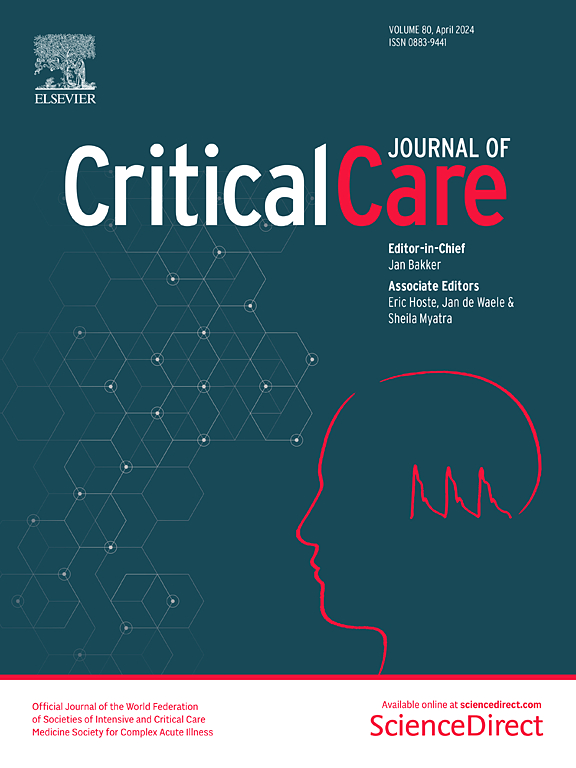Volume kinetics in a translational porcine model of stabilized sepsis with fluid accumulation
IF 8.8
1区 医学
Q1 CRITICAL CARE MEDICINE
引用次数: 0
Abstract
Fluid dynamics during and after a septic event is complex, but better knowledge could guide both fluid resuscitation and fluid removal. We aimed to compare fluid dynamics before and after sepsis in a clinically relevant mono-bacterial porcine model. Twelve sows with a mean body weight of 56 kg were anesthetized, mechanically ventilated, and invasively monitored. Sepsis was induced with an intravenous infusion of P. aeruginosa. Animals were resuscitated during the acute septic phase according to a protocolized algorithm. Volume kinetics was studied before the bacterial infusion (baseline) and 24 h later (late sepsis), and both consisted of an infusion of 1,500 mL of 0.9% saline over 20 min with repeated hemoglobin and albumin measurements and urine quantification. The kinetic analysis at baseline showed transient volume expansion of the central fluid compartment (the plasma) and a fast-exchange interstitial space, while gradually more fluid accumulated in the remote “third fluid space” with very slow turnover. In the late sepsis phase, hypoalbuminemia and slight hypovolemia was observed. As compared with baseline, fluid kinetics showed improved plasma expansion, and more expansion of the fast-exchange interstitial space rather than the slow-exchange space. The rate constant k21 describing return flow to the circulation was increased during the late sepsis phase, and hemoglobin-albumin dilution difference suggested that interstitial albumin recruitment occurred with the fluid infusion. The model predicted that high cardiac index and sepsis-induced weight gain were associated with greater fast-exchange compartment expansion. After sepsis, fluid was accumulated in the slow-exchange compartment, and further fluid administration distributed preferentially to the fast-exchange compartment with acceleration of lymph flow, improved plasma expansion, and recruitment of interstitial albumin.求助全文
约1分钟内获得全文
求助全文
来源期刊

Critical Care
医学-危重病医学
CiteScore
20.60
自引率
3.30%
发文量
348
审稿时长
1.5 months
期刊介绍:
Critical Care is an esteemed international medical journal that undergoes a rigorous peer-review process to maintain its high quality standards. Its primary objective is to enhance the healthcare services offered to critically ill patients. To achieve this, the journal focuses on gathering, exchanging, disseminating, and endorsing evidence-based information that is highly relevant to intensivists. By doing so, Critical Care seeks to provide a thorough and inclusive examination of the intensive care field.
 求助内容:
求助内容: 应助结果提醒方式:
应助结果提醒方式:


